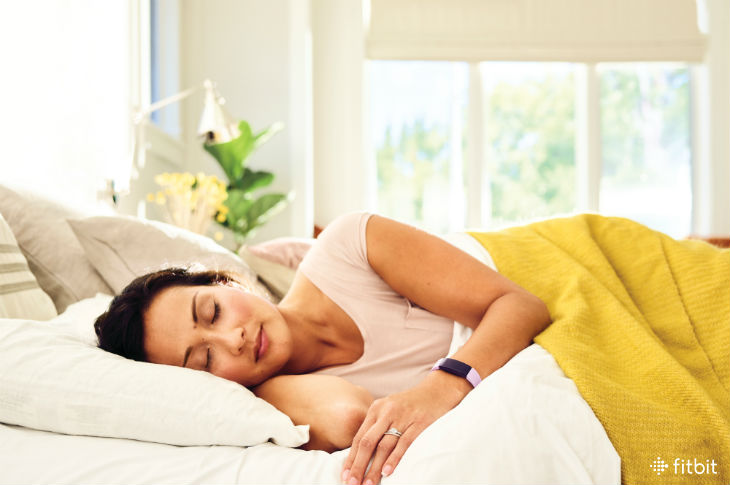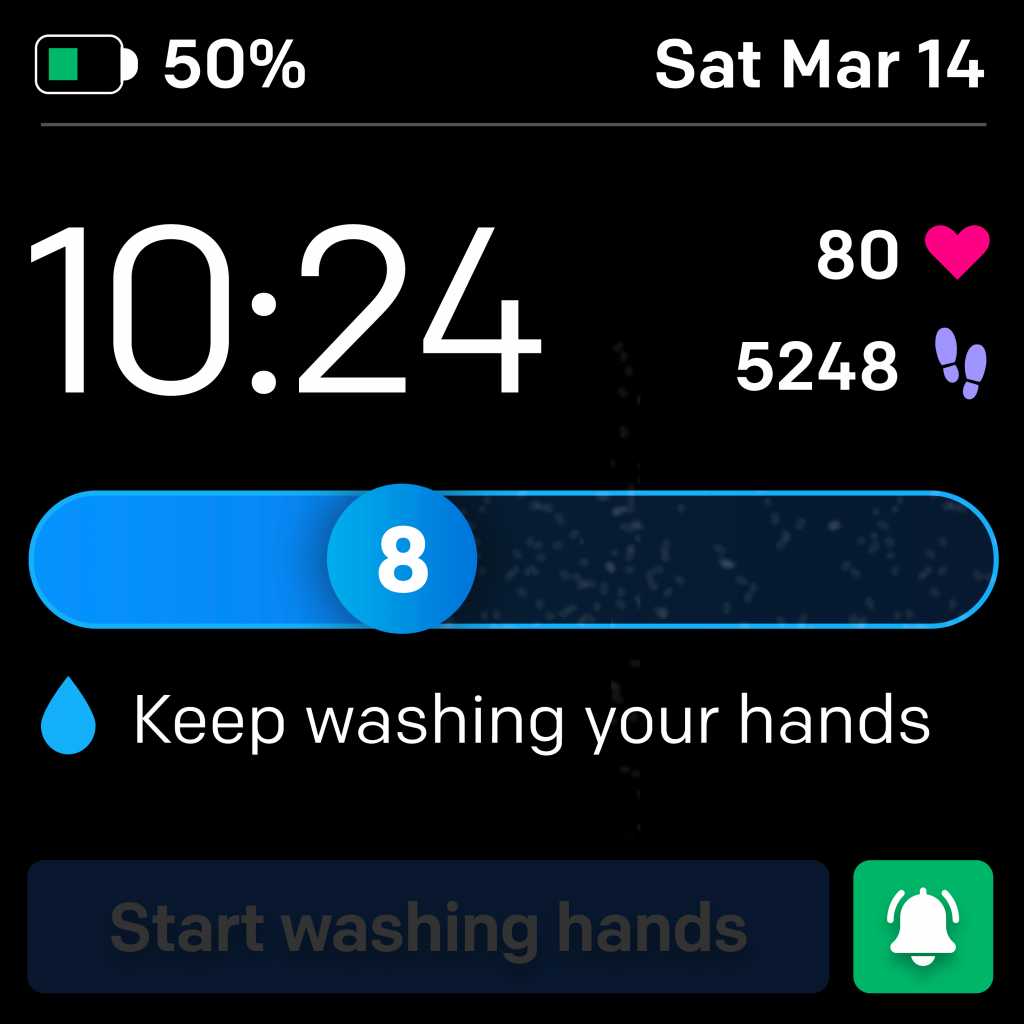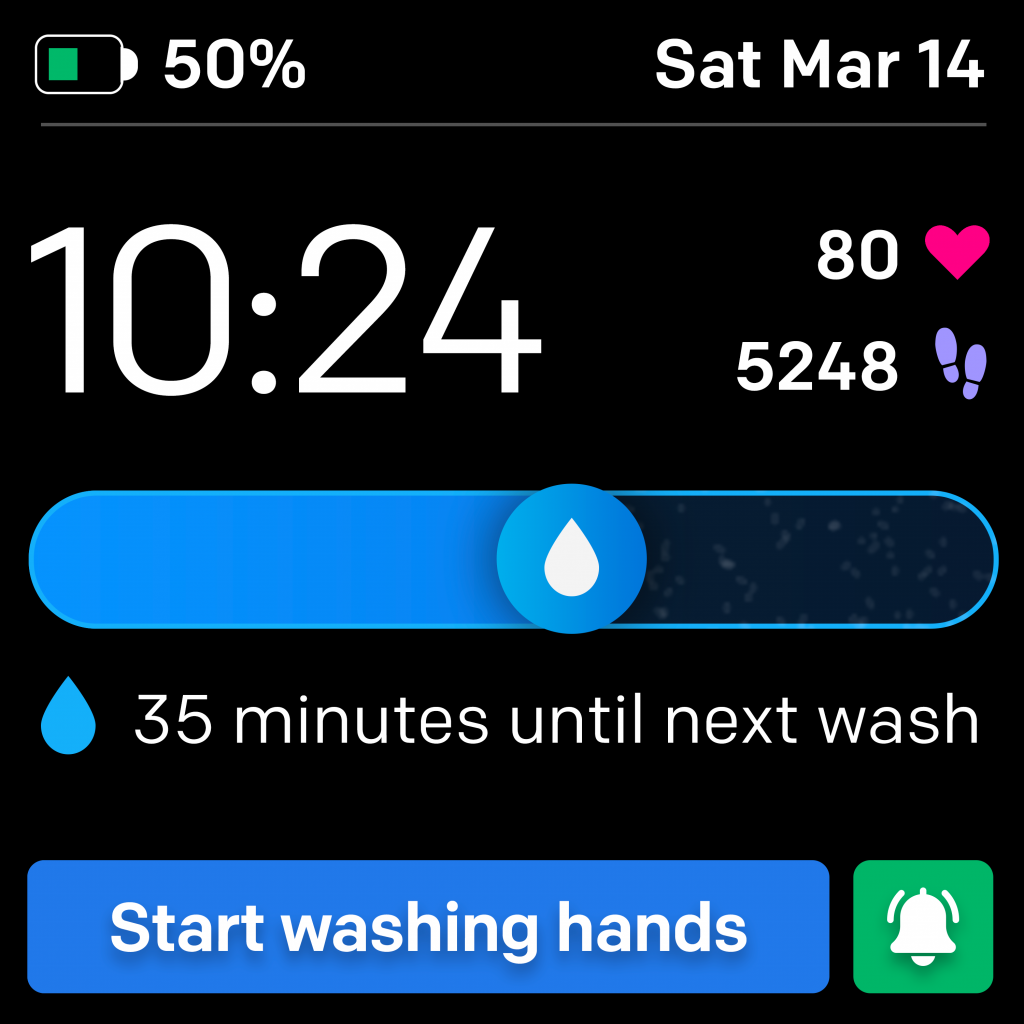
Fitbit’s newest advanced fitness tracker is here! The sleek and swimproof Fitbit Charge 4 has everything you need to keep you on track when it comes to your health and fitness goals. If you can get outdoors for a socially distanced workout, use built-in GPS to see your real-time pace and distance, and check out our new workout intensity map for your walk, run, or ride. Our new Active Zone Minutes feature helps you get your recommended daily dose of heart pumping activity, whether you’re working out indoors or outdoors.
Plus, Charge 4 offers a plethora of features, both new and improved, that you’re sure to love. Those include sleep tracking, Spotify – Connect & Control, 20+ goal-based exercise modes, and more. You asked and Fitbit delivered! Read on to discover everything we’re excited about.
What’s New?

Active Zone Minutes. Get your heart pumping with Active Zone Minutes, a new personalized feature that uses your heart rate to measure the intensity of your activity, helping you get the most out of every workout. Learn more about AZM here. Available now on Charge 4, and coming soon on Versa 2, Versa, Versa Lite, and Ionic.
Built-in GPS for pace and distance. Use the new built-in GPS feature during runs, hikes, rides, and more to see pace and distance on-wrist—all without your phone. Track anything from your walk around the neighborhood to your paddleboarding route, and see a map of your route afterward in the Fitbit app.
Workout intensity map. So what exactly is Fitbit’s new in-app workout intensity map? Simply put, after you do a GPS-enabled exercise (like a run, walk, or bike ride) you now see new data on top of your route map, with the option to select either heart rate zones or pace. If you select heart zones, it’ll show you HR zones shaded throughout your route. More curious about pace per mile? You can opt to view that instead.
20+ goal-based exercise modes. Add exercise shortcuts to your wrist like run, hike, bike, and more to quickly track your workout. Guess what else? You can now use our new outdoor exercise mode for a variety of activities, such as kayaking and cross-country skiing. And, it is GPS-enabled, so you’ll get a map of your workout afterward in the Fitbit app.
Insights to Know Your Body Better

Sleep Score, plus time in light, deep, and REM stages. There’s more to a good night’s sleep than just clocking in the requisite 8 hours of shuteye. Sleep Score combines multiple factors, looking at your sleeping heart rate data, time asleep, and restlessness throughout the night, every night you wear your Charge 4 (and any Fitbit device with Sleep Score) to bed.
This gives you a quick, easy way to see how well you’re sleeping, watch your trends over time, and keep yourself accountable to your sleeping goals. (Find out more about Fitbit’s advanced sleep tools here.)
Fitbit Premium. To support our community and help people stay active at home during today’s difficult times, Fitbit is offering 40 new pieces of Premium content free in the Fitbit app.
In addition, anyone new to Fitbit Premium can get a 90-day free trial of this paid subscription, which includes personalized health insights, guidance, advanced sleep tools, customized programs and 200+ workouts from brands like barre3, Daily Burn, obé fitness, Physique 57, POPSUGAR and Yoga Studio: Mind & Body. If Premium is not available in your region and you have not tried Fitbit Coach yet, we are offering a 90-day free trial so you can stream video workouts on your phone or computer.
Connect your Charge 4 and Premium account to unlock it all in the Fitbit app!
Female health tracking. Get in tune with your body more easily by using the Fitbit Charge 4 with the Fitbit app, which allows you to track periods, record symptoms, see a predicted ovulation calendar, and more.
Smart Features to Make Your Life Easier

Spotify – Connect & Control. The right playlist can make or break your workout. Just like you need the right gear and tools to up your workout game, listening to your favorite tunes will undoubtedly get you in the mood to slay that run or virtual class. That’s where the Spotify app on Fitbit comes in: Choose the music output, play, shuffle and skip content, and Like songs. Control your music and podcasts from your wrist and get moving! Spotify Premium subscription required; not available in all countries. Works when your phone is nearby. Volume control is not currently supported.
Call, text, calendar, and app notifications. Receive call, text, calendar, and customizable notifications on-wrist from any smartphone app, so you’re always in the loop but not always distracted. You can choose which notifications to see on-wrist. Works when your phone is nearby.
Helpful apps like weather, time, and stopwatch. Make your day-to-day that much smoother by using regular faves like weather, timer, and stopwatch—all readily available on-wrist.
Up to 7-day battery life. Yes, you read that right! With up to 7-day battery life, Fitbit Charge 4 frees you up for uninterrupted sleep and activity tracking for almost a week. Plus, your device has got up to five hours of battery life with continuous GPS. Convenient much? Battery life varies with use and other factors.
Tap-to-pay right from your wrist. Tap and pay to make secure purchases from your wrist with Fitbit Pay—at your favorite grocery stores, takeout restaurants, and more. See bank availability here.
Fitbit Features You Know & Love
The Fitbit features you know and love aren’t going anywhere. We’re talking the personal on-screen dashboard; customizable clock faces; swimproof capability; step challenges; and more.
And of course, you can always tap into our passionate community for all the social support you’re accustomed to on Fitbit, whenever you need it.
Get Your New Fitbit Charge 4 Today
Pre-order for Charge 4 and Charge 4 Special Edition begins today at Fitbit.com and select retailers online such as Amazon.com, Bestbuy.com, and Walmart.com; available online at all retailer sites worldwide and in stores where they are able to remain open, starting April 13, 2020. Charge 4 is available for $149.95 USD in black, rosewood, and storm blue/black.¹ Charge 4 Special Edition is available for $169.95 USD in an exclusive granite reflective/black woven band, plus a classic black band to easily swap out for workouts or a sportier look.² Charge 4 will also be added later this year to UnitedHealthcare Motion®, a wearable device walking program available to employers.
Customize Charge 4 with a variety of new accessory bands and colors, including REPREVE® recycled woven reflective bands in midnight and rosewood; breathable silicone sport bands in evergreen and frost white; and premium Horween® hand-crafted leather in black.³ Charge 4 accessories are sold separately in store and online, and are compatible with Fitbit Charge 3 devices, starting at $29.95 USD.
¹Storm blue/black sold exclusively at Fitbit.com.
²Fitbit Charge 4 Special Edition comes with an additional black classic band.
³Leather accessories made of Horween leather and other leather materials. Accessories sold separately.
The post Fitbit Charge 4 Is Here: What You Need To Know About Our Newest Fitness Tracker appeared first on Fitbit Blog.
source https://blog.fitbit.com/fitbit-charge-4/

 , a new and more personalized way to measure your physical activity. Using our 24/7
, a new and more personalized way to measure your physical activity. Using our 24/7 














